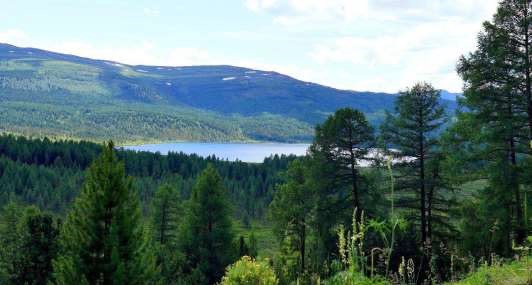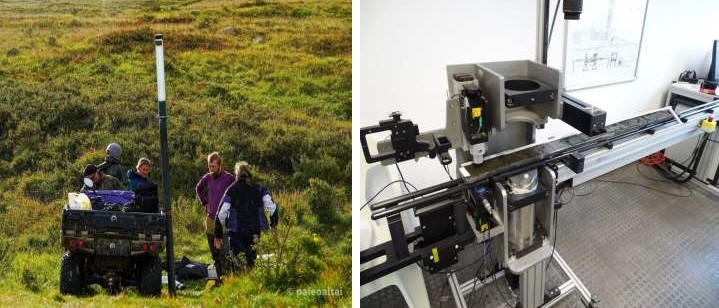Scientists have revealed a number of interesting facts based on palynological analysis of bottom sediments of Lake Balyktukyol (Altai Republic, southern West Siberia). The researchers participating in the works represent the
Trofimuk Petroleum Geology and Geophysics SB RAS and the Institute of Archaeology and Ethnography SB RAS.
Contemporary view of Lake Balyktukyol
The project participants (
Yu. D. Vnukovskaya, specialists, and
O.B. Kuzmina, PhD, senior researcher, from Laboratory of Mesozoic and Cenozoic Paleontology and Stratigraphy, IPGG SB RAS ,and N.A. Rudaya, D.Sc. from IAET SB RAS)
identified the main patterns of vegetation growth in the vicinity of Lake Balyktukyol and assessed local ecological conditions of the investigated water body over the past 6950 years based on the palynological analysis data and biomimetics approach.
The specialists collected a core sample from the lake, to be studied in the laboratory conditions. The researchers built an age-depth model of the bottom sediment column and analyzed the pollen finds. Specifically, the obtained palynological
diagram of the sediment core has revealed the dynamics of dominant biomes, and non-pollen palynomorphs were identified.
Contemporary view of Lake Balyktukyol
The work results allowed identifying the stages of vegetation development in the Lake Balyktukyol area.
In the period from 6950 to 4300 yrs BP (before present), pine and birch dominated the forest composition on the Ulagan
Plateau; larch, spruce and fir were ubiquitously spread. This time period is interpreted as the stage with the greatest plant
diversity, which peaked under conditions of a favorable humid climate, before the beginning of its decline. Time period between
4300 and 800 yrs BP saw a trend towards cooling and aridization, while plant communities showed an increase in cereals and dwarf birch species and a decrease in spruce species. About 3400-3300 yrs BP, the number of dwarf
birch decreased on the Ulagan Plateau, and a tendency for treeless herbaceous groups began to develop. At the turn of 2200 yrs BP, the portion of woody vegetation decreased, while that of herbaceous-shrubby vegetation increased.

Laboratory sample processing for palynological analysis: pre-processing sample weighing; centrifugation of samples; treatment of samples with
hydrochloric acid to remove carbonates; sample sieving through a 150 µm sieve.
Finally, 800 yrs BP, the proportion of common pine (Pinus sylvestris), spruce and fir in the area decreased; the populations of Siberian pine and dwarf birch increased; larch and heath became
ubiquitously spread. All this indicates the development of larch taiga, as well as various high-mountain tundra plant species around the lake.
After 600 years ago, dwarf birch became more widespread in the vegetation cover, which is indicative of the formation of various alpine-type tundra communities on the Ulagan Plateau, close to the contemporary ones. The maximum
development of tundra vegetation was recorded between 500-200 yrs BP, which was probably related to the Little Ice Age that punctuated the Earth's climate history at that time.
This research results were published in the Palaeogeography, Palaeoclimatology, Palaeoecology journal (Karachurina et al., 2023).
The studies conducted have provided new insights about the climate that existed in the southern West Siberia in past centuries and millennia.
Published by the IPGG Press Service
Photo courtesy of N.A. Rudaya (1-3); Yu. D. Vnukovskaya (4-7)


